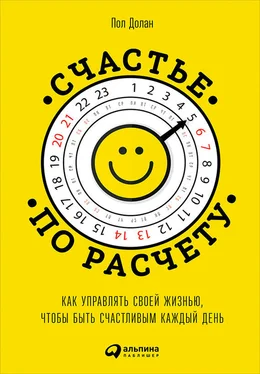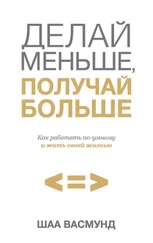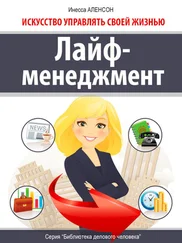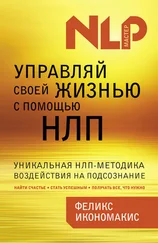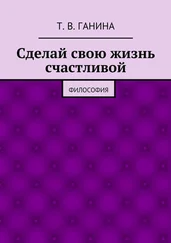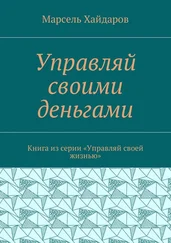Daugherty J.R., Brase G.L. Taking time to be healthy: predicting health behaviors with delay discounting and time perspective. Personality and Individual Differences 2010; 48: 202–7.
Goodin R.E., Rice J.M., Parpo A., Eriksson L. Discretionary time: a new measure of freedom. Cambridge University Press, 2008.
Wang M., Sunny Wong M.C. Leisure and happiness in the United States: evidence from survey data. Applied Economics Letters 2011; 18: 1813–16.
Geiselman R.E. Enhancement of eyewitness memory: an empirical evaluation of the cognitive interview. Journal of Police Science & Administration 1984.
Гилберт Д. Спотыкаясь о счастье. – М.: Альпина Паблишер, 2015.
Gilbert D., Killingsworth M.A., Eyre R.N., Wilson T.D. The surprising power of neighborly advice. Science 2009; 323: 1617–19.
Dobewall H., Realo A., Allik J., Esko T., Metspalu A. Self-other agreement in happiness and life-satisfaction: the role of personality traits. Social Indicators Research 2013; 114: 479–92.
Lyubomirsky S., Lepper H. A measure of subjective happiness: preliminary reliability and construct validation. Social Indicators Research 1999; 46: 137–55.
Roberts J., Hodgson R., Dolan P. “It’s driving her mad”: gender differences in the effects of commuting on psychological health. Journal of Health Economics 2011; 30: 1064–76.
Seidlitz L., Diener E. Sex differences in the recall of affective experiences. Journal of Personality and Social Psychology 1998; 74: 262–71.
Шварц Б. Парадокс выбора. Почему «больше» значит «меньше». – М.: Добрая книга, 2005.
Bisson J.I., Jenkins P.L., Alexander J., Bannister C. Randomised controlled trial of psychological debriefing for victims of acute burn trauma. British Journal of Psychiatry 1997; 171: 78–81.
Bonanno G.A. Loss, trauma, and human resilience: have we underestimated the human capacity to thrive after extremely aversive events? American Psychologist 2004; 59: 20.
Rule N.O., Ambady N. Brief exposures: male sexual orientation is accurately perceived at 50ms. Journal of Experimental Social Psychology 2008; 44: 1100–1105.
Dijksterhuis A., van Olden Z. On the benefits of thinking unconsciously: unconscious thought can increase post-Choice satisfaction. Journal of Experimental Social Psychology 2006; 42: 627–31.
Creswell J.D., Bursley J.K., Satpute A.B. Neural reactivation links unconscious thought to decision-making performance. Social Cognitive and Affective Neuroscience 2013.
Payne J.W., Samper A., Bettman J.R., Luce M.F. Boundary conditions on unconscious thought in complex decision-making. Psychological Science 2008; 19: 1118–23.
Newell B.R., Wong K.Y., Cheung J.C., Rakow T. Think, blink or sleep on it? The impact of modes of thought on complex decision-making. Quarterly Journal of Experimental Psychology 2009; 62: 707–32; Dijksterhuis A., Van Baaren R.B., Bongers K.C., Bos M.W., Van Leeuwen M.L., Van der Leij A. The rational unconscious: conscious versus unconscious thought in complex consumer choice. Social Psychology of Consumer Behavior 2009: 89–108.
Hsee C.K., Zhang J., Yu F., Xi Y. Lay rationalism and inconsistency between predicted experience and decision. Journal of Behavioral Decision Making 2003; 16: 257–72.
Thaler R.H., Sunstein C.R. Nudge: improving decisions about health, wealth, and happiness. Yale University Press, 2008.
Leventhal H., Singer R., Jones S. Effects of fear and specificity of recommendation upon attitudes and behavior. Journal of Personality and Social Psychology 1965; 2: 20; Zhao M, Lee L, Soman D. Crossing the virtual boundary: the effect of task-irrelevant environmental cues on task implementation. Psychological Science 2012; 23: 1200–1207.
Dolan P., Hallsworth M., Halpern D., King D., Metcalfe R., Vlaev I. Influencing behaviour: the MINDSPACE way. Journal of Economic Psychology 2012; 33: 264–77; Dolan P., Hallsworth M., Halpern D., King D., Vlaev I. MINDSPACE: influencing behaviour through public policy. Report for the Cabinet Office, 2010.
Beshears J., Choi J.J., Laibson D., Madrian B.C. Social security policy in a changing environment. In: The importance of default options for retirement saving outcomes: evidence from the United States. University of Chicago Press, 2009: 167–69; Rithalia A., McDaid C., Suekarran S., Myers L., Sowden A. Impact of presumed consent for organ donation on donation rates: a systematic review. British Medical Journal 2009; 338.
Team B.I. Applying behavioral insights to reduce fraud, error and debt. UK London Cabinet Office, 2012.
Dolan P., Metcalfe R. Better neighbors and basic knowledge: a field experiment on the role of non-pecuniary incentives on energy consumption. Unpublished working paper, 2013.
Holland R.W., Hendriks M., Aarts H. Smells like clean spirit: nonconscious effects of scent on cognition and behavior. Psychological Science 2005; 16: 689–93.
Birnbach D., King D., Vlaev I., Rosen L., Harvey P. Impact of environmental olfactory cues on hand hygiene behaviour in a simulated hospital environment: a randomized study. Journal of Hospital Infection 2013.
Shirtcliff E.A., Allison A.L., Armstrong J.M., Slattery M.J., Kalin N.H., Essex M.J. Longitudinal stability and developmental properties of salivary cortisol levels and circadian rhythms from childhood to adolescence. Developmental Psychobiology 2012; 54: 493–502.
Holzman D.C. What’s in a color? The unique human health effects of blue light. Environmental Health Perspectives 2010; 118: A22–A27.
Moore E. A prison environment’s effect on health care service demands. Journal of Environmental Systems 1981; 11: 17–34; Ulrich R. View through a window may influence recovery from surgery. Science 1984; 224: 420–21.
Park S.H., Mattson R.H., Kim E. Pain tolerance effects of ornamental plants in a simulated hospital patient room. In: Relf D., ed. XXVI International Horticultural Congress: Expanding Roles for Horticulture in Improving Human Well-Being and Life Quality 639, 2002: 241–47; Katcher A., Segal H., Beck A. Comparison of contemplation and hypnosis for the reduction of anxiety and discomfort during dental surgery. American Journal of Clinical Hypnosis 1984; 27: 14–21.
Wansink B. Mindless eating: why we eat more than we think. Random House, 2010.
Wansink B., Sobal J. Mindless eating: the 200 daily food decisions we overlook. Environment and Behavior 2007; 39: 106–23.
Читать дальше
Конец ознакомительного отрывка
Купить книгу
